How we're working to save them:
- Secure water for SCCC steelhead through purchasing water rights, setting low flow requirements, incentivizing water efficient land use practices, conservation, using storage tanks, reducing groundwater pumping, and increasing enforcement.
- Restore fish passage on a broad and coordinated scale in core watersheds.
- Expand and improve estuarine/lagoon habitat through regulation of land use practices.
- Update and implement the California Coastal Monitoring Plan protocols to gather critical population data.
- Complete a Fishery Management and Evaluation Plan to coordinate recovery actions.
Where to find South-Central California Coast Steelhead:
South-Central California Coast Steelhead Distribution
SCCC steelhead range from the Pajaro River (Santa Clara/San Benito Counties) southward to the southern edge of San luis Obispo County. The watersheds that historically supported the largest populations of SCCC steelhead include the Pajaro, Salinas, Carmel, and Big Sur rivers. Prior to the 2012-2016 drought, SCCC steelhead were still found in nearly all coastal watersheds in their historical range, including streams with no recent historical records of steelhead, such as los Osos, Vincente, and Villa creeks (San luis Obispo County).
How they South-Central California Coast Steelhead Scored:
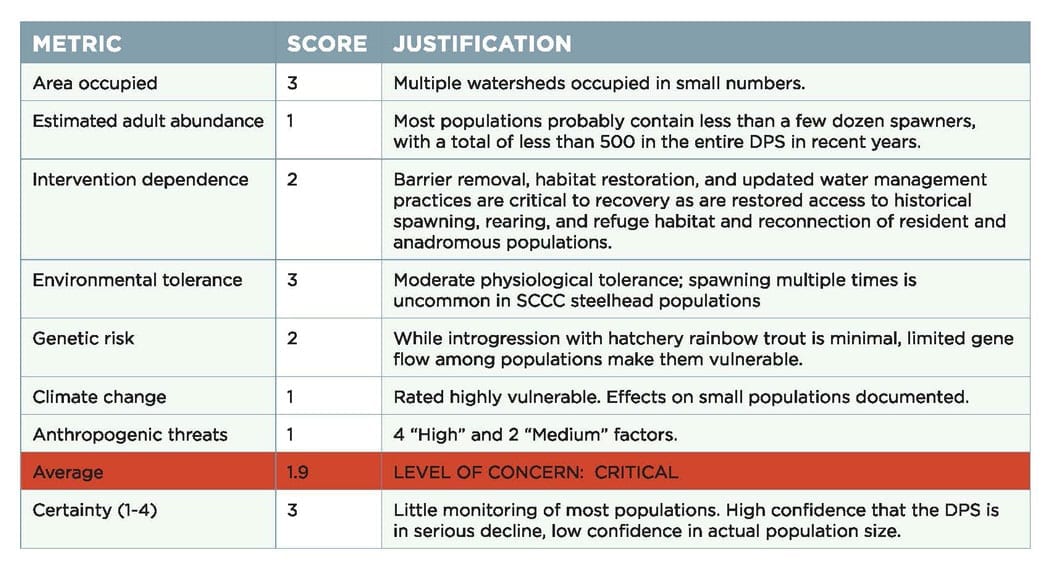
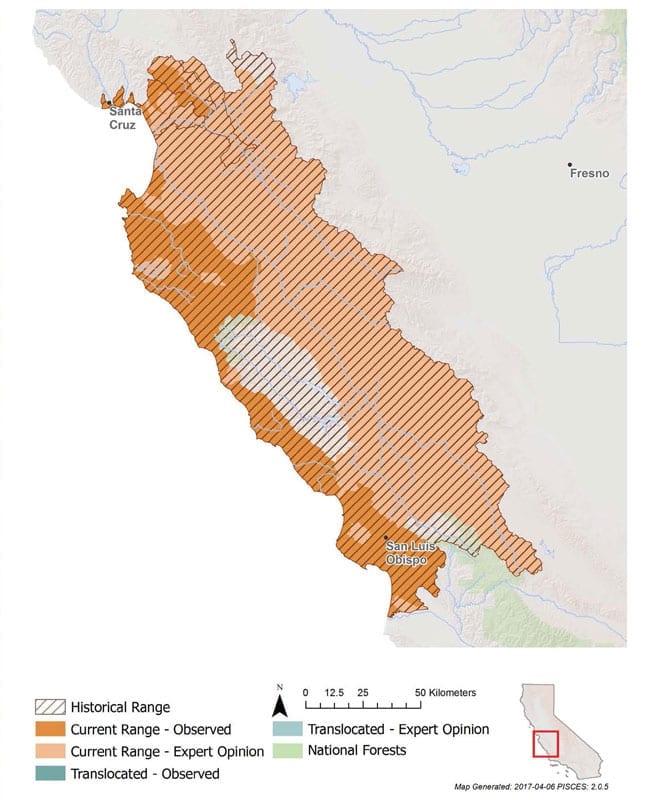
Characteristics
South-Central California Coast steelhead in general have longer, streamlined bodies that are suited to the small, flashy streams of central and southern California.
Abundance
Historically, annual runs of adult SCCC steelhead averaged about 27,000 adults in wet years. Reliable abundance data are severely lacking, but best estimates suggest that less than 500 adults return to fresh water each year to spawn. During historic drought from 2012- 2016, there was limited documented spawning in most watersheds across the DPS, suggesting populations may shrink in the next few years.
Habitat & Behavior
The behaviors and habitats of SCCC steelhead are not well documented, but are apparently similar to those of Southern steelhead. in general, they spend one to three years in fresh water, then two to four years at sea before returning to natal rivers to spawn from January to May. in years with low rainfall, such as 2012- 2016, lagoon barriers may not breach during the rainy season, making fresh water migrations impossible. Juveniles may migrate from fresh water to lagoons and estuaries, or between reservoirs and tributaries, multiple times in a single year. immature steelhead typically spend several weeks to months in estuaries, where they grow rapidly to increase their survival at sea. in the Pajaro and Salinas rivers, desiccation of tributary streams in dry years forces juveniles out to sea if estuary mouths are open or upstream into headwaters where perennial streamflows exist.
Genetics
SCCC steelhead are distinct from Southern steelhead in their genetics and the environmental conditions in which they live. Recent genetic research suggests that juvenile Rainbow trout females are more likely to migrate to sea than males; this could be because their egg production depends on large body size, which increases significantly with time spent at sea.



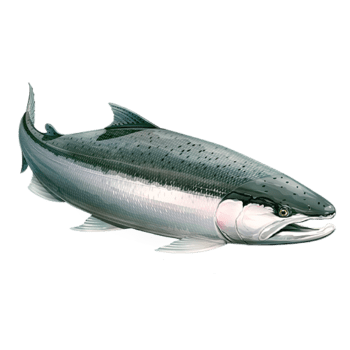
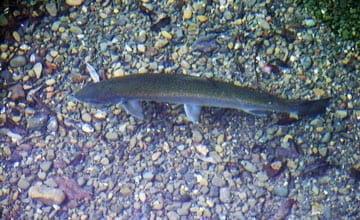




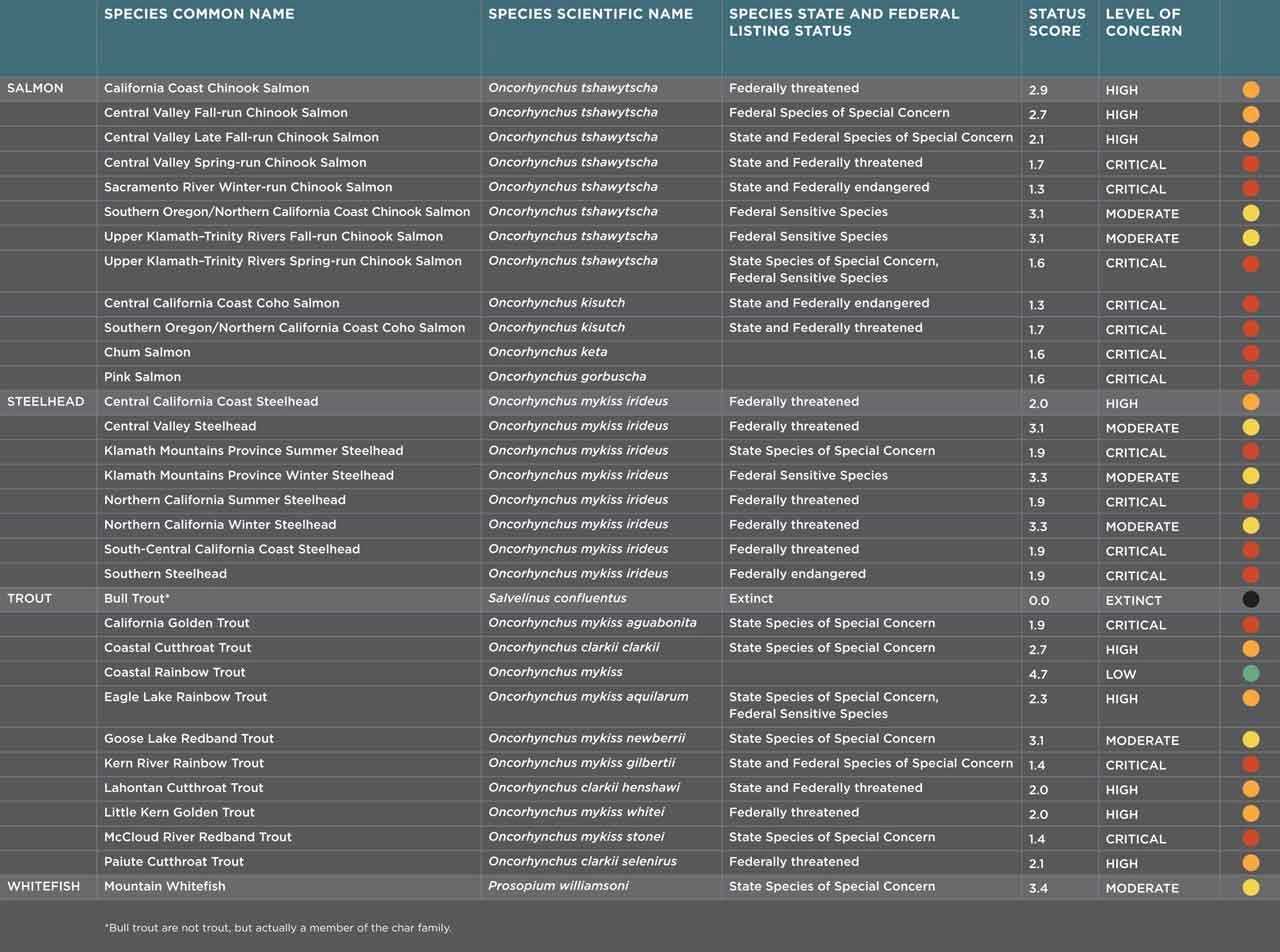












 Dams block access to historical spawning and rearing habitats. Downstream, dams alter the timing, frequency, duration, magnitude, and rate of change of flows decreasing habitat quality and survival.
Dams block access to historical spawning and rearing habitats. Downstream, dams alter the timing, frequency, duration, magnitude, and rate of change of flows decreasing habitat quality and survival.